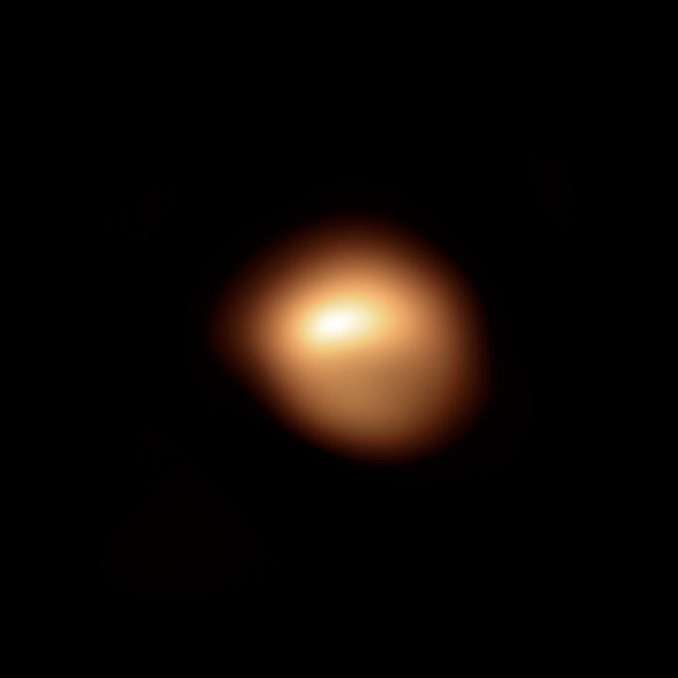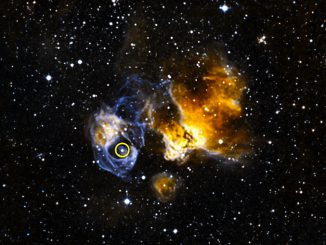
Amateur and professional astronomers alike have marvelled at the dimming of the red supergiant Betelgeuse in the familiar constellation Orion, a phenomenon some have interpreted as evidence the bloated star is nearly out of nuclear fuel and on the verge of exploding in a supernova blast.
But astronomers at the University of Washington and the Lowell Observatory say it’s more likely Betelgeuse is simply doing what red supergiants do, throwing off gas in its outer atmosphere that absorbs some of its light on the way to Earth.
“We see this all the time in red supergiants, and it’s a normal part of their life cycle,” said Emily Levesque, associate professor of astronomy at the University of Washington. “Red supergiants will occasionally shed material from their surfaces, which will condense around the star as dust. As it cools and dissipates, the dust grains will absorb some of the light heading toward us and block our view.”
Levesque and Lowell’s Phillip Massey carried out observations in February that allowed them to measure the average surface temperature across Betelgeuse by analysing the spectra of the light reaching Earth.
Using the 4.3-metre Lowell Discovery Telescope and a spectrometer equipped with a filter to lower the light’s intensity, the researchers determined the star’s average temperature on 14 February was about 3,325 Celsius (6,017 Fahrenheit). That’s 50 to 100 degrees cooler than measurement made in 2004, long before the current dimming began.
The measurements cast doubt on an alternative theory that Betelgeuse’s dimming has been caused by huge convection cells rising to the surface and cooling. Levesque and Massey say if that was the case, they would have seen a much greater decrease in temperature between 2004 and 2020.
“A comparison with our 2004 spectrum showed immediately that the temperature hadn’t changed significantly,” said Massey. “We knew the answer had to be dust.”
More observations are planned as astronomers around the world keep tabs on Betelgeuse and it’s on-going evolution. Regardless of its temperature and brightness today, the supergiant is still expected to explode in the next 100,000 years or so when nuclear fusion finally grinds to a halt and its core collapses.
“Red supergiants are very dynamic stars,” said Levesque. “The more we can learn about their normal behaviour — temperature fluctuations, dust, convection cells — the better we can understand them and recognise when something truly unique, like a supernova, might happen.”



